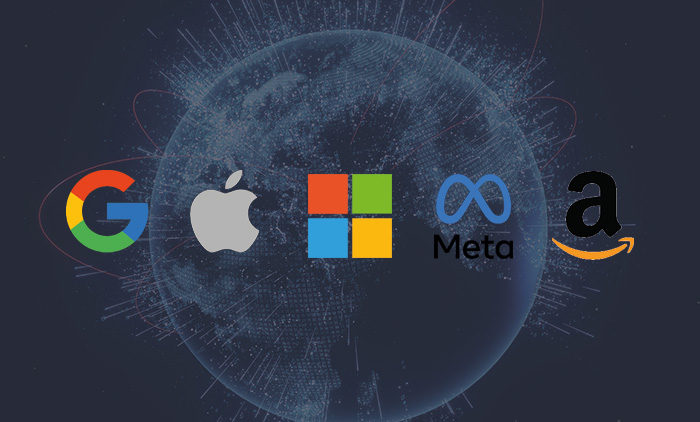Analyses / Energy and Raw Materials
10 February 2025
Towards Energy Domination by the GAFAM?

“Artificial intelligence (AI) is the new electricity.” This phrase, spoken by researcher Andrew Ng in 2017, illustrates the scale that AI has reached in our societies. Not without apprehension, it has gradually taken a dominant role in our production processes and entertainment, becoming almost vital in areas such as healthcare and defence. This quote is also telling when it comes to AI’s connection with the energy transition, as in the face of increasingly complex electricity networks, only the most advanced digital tools seem capable of balancing the intermittency of renewables with our growing energy needs.
However, behind these twin transitions—digital and energy—lies a paradox: the energy transition needs AI, but AI requires vast amounts of energy. If we look only at the United States, the annual electricity demand of data centres could exceed 580 terawatt-hours (TWh) by 2028, according to the IEA, compared to “just” 176 TWh in 2023—more than France’s total annual consumption! This surge, both rapid and substantial, raises concerns about whether digital technology can truly support a smooth energy transition.
To resolve this paradox, digital players—starting with the GAFAM—have, for several years, been multiplying low-carbon energy purchase agreements and investing in “green” infrastructure to the point of becoming energy market players themselves. But the acceleration driven by AI is pushing them towards more radical solutions. In May 2023, Microsoft signed a binding agreement with Helion Energy to power its facilities with a nuclear fusion reactor by 2028. The following year, Microsoft again declared its intention to restart one of the reactors at Three Mile Island, the site of the first major nuclear accident in history. At the same time, Oracle, Amazon, and Meta collectively invested hundreds of millions of dollars in Small Modular Reactors (SMRs), while Sam Altman, CEO of OpenAI, ramped up his investments in nuclear energy companies, including Helion. This growing interest in nuclear energy can be explained by its dispatchability and high capacity factor, making it well-suited to the near-100% uptime required by data centres. It is a golden opportunity for promoters of innovative nuclear technologies, who see digital giants as a new, substantial, and determined source of investment, despite the still uncertain profitability of these ventures.
While the specifics differ from project to project, the underlying idea remains the same: internalising energy production to meet AI’s needs more efficiently. Some reactors might not even be connected to public grids, relying solely on private infrastructures, free from third-party access constraints, within autonomous digital islands. In the long run, however, this strategy could evolve into a broader vision aimed at expanding GAFAM’s influence over the energy sector. These islands could become competitive energy suppliers, leveraging excess production and large-scale optimisation—something GAFAM already excel at. Eventually, these dispatchable energy capacities could become instruments of influence over businesses or even states seeking affordable electricity, particularly in an era of energy insecurity. Such energy supply could also come with binding conditions—a strategy reminiscent of how GAFAM operate in the digital sphere, where their now-essential services integrate users into ecosystems that are often free yet intrusive, designed to cement their monopoly through technical dependencies.
As things stand, Microsoft, Amazon, and Google have already acquired the necessary expertise to enter the energy market and do not hide their ambitions to become major players in innovative energy projects. While on paper, this strategy has the merit of promoting decarbonisation, it also reinforces an excessive market dominance. Even if this scenario remains hypothetical, it is no less credible or foreseeable. Ireland, for example—the world’s third-largest data centre hub—is already struggling with a massive surge in electricity demand while supply struggles to keep pace. If GAFAM were to concentrate a significant share of investment in dispatchable energy assets, how should such an imbalance be managed? This question becomes even more pressing given the political overreach of companies like Meta and, of course, Elon Musk.
Even though the release of DeepSeek-R1, supposedly more energy-efficient, has shaken American AI and energy players, the integration of energy capabilities into the digital sector is likely to remain a long-term trend. Despite optimisation efforts, AI will continue to be a major energy consumer, particularly due to its ever-expanding use. Finally, we must not forget that in times of upheaval, markets tend to fall back on the most readily available energy sources—gas, oil, and above all, coal. And despite commitments to carbon neutrality, the digital sector remains a persistent emitter of greenhouse gases, in proportions closely linked to AI advancements.
